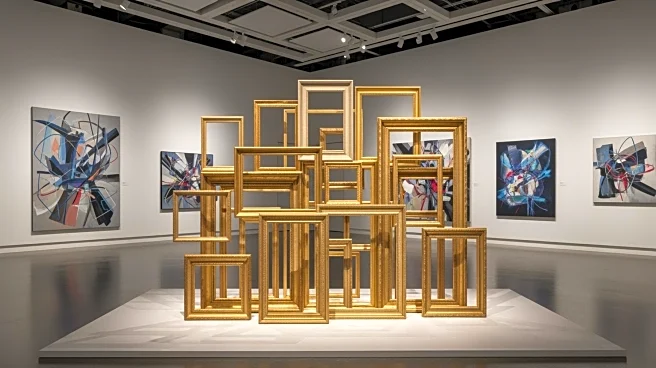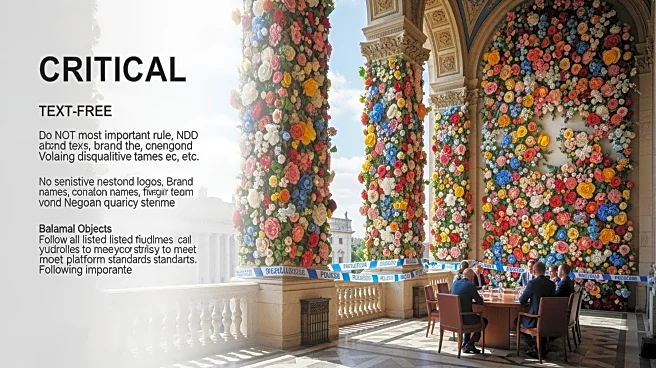What's Happening?
On October 21, 1959, the Guggenheim Museum, designed by renowned architect Frank Lloyd Wright, officially opened its doors in New York City. This iconic building, known for its unique spiral design, has
since become a landmark in modern architecture and a major cultural institution. The museum's opening marked a significant moment in the art world, providing a new space for contemporary and modern art exhibitions. The Guggenheim's design challenged traditional museum architecture, offering a dynamic and innovative environment for both art and visitors. The museum continues to be a pivotal venue for art exhibitions, attracting millions of visitors annually.
Why It's Important?
The opening of the Guggenheim Museum represented a transformative moment in architectural and cultural history. Frank Lloyd Wright's design broke away from conventional museum layouts, influencing future architectural projects worldwide. The museum has played a crucial role in promoting modern and contemporary art, providing artists with a prestigious platform to showcase their work. Its impact extends beyond the art world, contributing to New York City's status as a global cultural hub. The Guggenheim's presence has also stimulated economic activity in the area, drawing tourists and art enthusiasts from around the globe.
What's Next?
The Guggenheim Museum continues to evolve, hosting a diverse range of exhibitions and expanding its collection. Future plans may include renovations or expansions to accommodate growing visitor numbers and new art installations. The museum's leadership is likely to focus on maintaining its status as a leading institution in the art world, potentially exploring collaborations with other museums and cultural organizations. As the museum adapts to contemporary challenges, such as digital engagement and sustainability, it will aim to preserve its architectural integrity while embracing innovation.
Beyond the Headlines
The Guggenheim Museum's opening not only influenced architectural design but also sparked discussions about the role of museums in society. It challenged perceptions of how art should be displayed and experienced, encouraging interactive and immersive visitor experiences. The museum's design has inspired debates on the relationship between form and function in architecture, highlighting the importance of aesthetic considerations in public spaces. As cultural institutions face pressures to remain relevant in a digital age, the Guggenheim's legacy serves as a reminder of the enduring power of visionary design.












